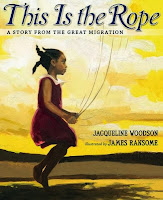"Best of" Books is a bloghop hosted by Diane Estrella at That's What I'm Here For
Picking the 5 best YA books I have read this year is no easy task, there were so many good books to chose from. These are the ones I finally picked:
Rose Under Fire by Elizabeth Wein
I loved Code Name Verity and was hesitant about this second WWII novel, but Elizabeth is genius and has written one of the most gripping novels about a young American female pilot who finds herself in Ravensbrück Concentration Camp. Rose Under Fire is definitely my favorite book of 2013.
Read my review here
Fangirl by Rainbow Rowell
This was just such a fun novel to read, yet it opens up lots of questions about the legality/legitimacy of fan fiction. When twin Cath gets to college, she has a hard time making real friends and leaving the world of fanfiction writing behind, while her sister Wren has no problem leaving it behind for campus partying. Both girls have reasons to escape life, but both have some coming of age work to do. Fangirl is a novel very much of today.
Maggot Moon by Sally Gardner
This is an edgy novel set in a Nazi-like dystopian 1950s England. Standish Treadwell, 15, is a severely dyxlectic teen, with one brown and one blue and naturally, the brunt of bullying at school by both teachers and students. But when he befriends Hector, a new boy, things change.
Read my review here
The Archived by Victoria Schwab
This first novel in a forthcoming series introduces us to a library of a different kind - a place where the dead are archived to preserve their stories. But sometimes they wander out of the archive and it is the job of Keepers to return them to the library. That's what MacKenzie Bishop, 15, does. She is the youngest Keeper ever and has some real conflicts of interest that interfere with her Keeper duties. Great science fiction, and I can't wait to read Book 2.
Prisoner B-3087 by Alan Gratz
Imagine surviving 1 ghetto, 10 concentration camps and 2 death marches. In the novel based on a true story, this is exactly how Yanek Gruener spent his adolescence and survived to talk about it. Despite the horrors witnessed by Yanek, there are some read heartwarming moments in his young life. A definite must for fans of historical fiction.
Be sure to visit the following blogs to see what their Best of 2013 YA books choices are:


























































